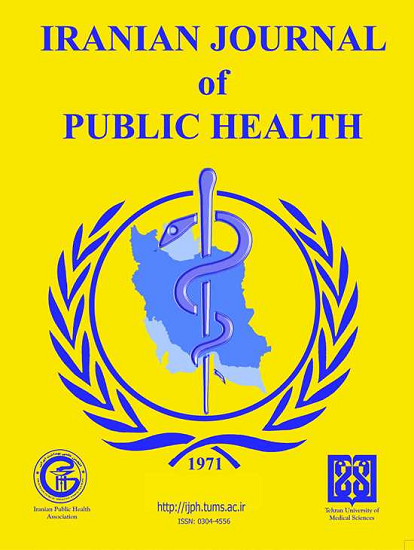The Updated Trend of Association between Dental Caries and Stunting in All Age Groups: A Systematic Review
Abstract
Background: Stunting has a negative impact on the growth and development of children, which include their susceptibility to dental caries. Caries in primary teeth have been consistently related to malnutrition. Having a history of severe caries was connected with slower childhood growth. We aimed to explain the updated trend of association between stunting and dental caries among all age groups.
Methods: A review was done using PRISMA. PubMed and Science Direct was used as database from Jan 2022 to Jan 2023. Studies obtained using specific keywords was 1.748 then filtered. All of the studies that were obtained using specific keywords about stunting and DMFT and or PUFA index. There is no limited year in this systematic search. Endnote software was used to help with the inclusion process; data was extracted into a table that had been prepared.
Results: There were 10 included studies in this systematic review. Eight studies that reported higher dental caries in stunting children than the normal children. Two studies showed a connection between developing stunting malnutrition and severe dental caries. Early childhood caries may increase vulnerability to dental caries by causing odontogenesis to fail, delayed tooth eruption and changes in the salivary glands. Children's ability to eat and sleep may be negatively impacted by untreated caries pain. It might result in decreased nutrient intake and poor appetite, while sleep disturbances might prevent growth hormones from being secreted.
Conclusion: There was a correlation between dental caries and growth stunting because of a decrease in the composition of saliva and defects in tooth formation in children suffered stunting. Thus, there were oral functional limitations and a decrease in food intake since severe dental caries.
2. Asriani R, Ode Salma W, Jurusan Kesehatan Masyarakat P, Halu Oleo U (2022). Analisis Faktor Risiko Kejadian Stunting Pada Anak Baduta (6-24 bulan) Di Wilayah Kerja Puskesmas Mowila. Nurs Updat J Ilm Ilmu Keperawatan,13(3):115–22.
3. Abdat M, Usman S, Chairunas C, Suhaila H (2020). Relationship between stunting with dental and oral status in toddlers. J Dentomaxillofacial Sci, 5(2):114-119.
4. Delgado-Angulo EK, Hobdell MH, Bernabé E (2013). Childhood stunting and caries increment in permanent teeth: A three and a half year longitudinal study in Peru. Int J Paediatr Dent,23(2):101–9.
5. Badruddin IA, Muthia K, Darwita RR, et al (2021). Relationship between Oral Health Status and Stunting in 5-Year-Old Children in Indonesia. J Int Dent Med Res,14(3):1039–43.
6. Omer Muhammad N, Ali Al-Obaidi D, Mohammad Amen D (2015). Prevalence of dental caries, gingival status, and enamel defect and its relation to nutritional status among kindergarten children in Sulaimani city. IOSR J Dent Med Sci Ver II, 14(12):2279–861.
7. Turton B, Chher T, Hak S, et al.(2022). Associations between dental caries and ponderal growth in children: A Cambodian study. J Glob Health,12:04046.
8. Renggli EP, Turton B, Sokal-Gutierrez K, et al.(2021). Stunting malnutrition associated with severe tooth decay in cambodian toddlers. Nutrients, 13(2):290.
9. Javed F, Feng C (2017). Incidence of early childhood caries : A systematic review and meta- analysis. J Invest Clin Dent, 8(4). doi: 10.1111/jicd.12238.
10. Dimaisip-Nabuab J, Duijster D, Benzian H, et al (2018). Nutritional status, dental caries and tooth eruption in children: A longitudinal study in Cambodia, Indonesia and Lao PDR. BMC Pediatr, 18(1):300.
11. Setijanto D, Alkadasi Ba, Nurrobi Law, et al (2023). Caregiver perception of children s dental caries and experience of accessing dental health services for their children. Brazilian Dent Sci,26(2):e3749.
12. Setijanto D, Ramadhani A, Olivia KL, et al (2020). Dental pain among children and adolescents. Syst Rev Pharm,11(5):616–8.
13. Shen A, Bernabé E, Sabbah W (2020). Undernutrition is associated with change in severe dental caries. J Public Health Dent, 80(3):236–43.
14. Vieira KA, Rosa-Júnior LS, Souza MAV, et al (2020). Chronic malnutrition and oral health status in children aged 1 to 5 years: An observational study. Medicine (Baltimore), 99(18):e19595.
15. Abdat M, Chairunas C. (2022) Analysis of Status of Oral Stunting in Toddlers and Its Relationship with Mother’s Parenting. Proc 2nd Aceh Int Dent Meet 2021 (AIDEM 2021).;48(Aidem 2021):122–7.
16. Sadida ZJ, Indriyanti R, Setiawan AS (2022). Does Growth Stunting Correlate with Oral Health in Children?: A Systematic Review. Eur J Dent, 16(1):32–40.
17. Rego IN, Cohen-Carneiro F, Vettore MV, et al (2020). The association between nutritional status and dental caries in low-income children: A multilevel analysis. Int J Paediatr Dent, 30(5):607–18.
18. Setijanto D, Bramantoro T, Anggraini ND, et al (2020). The correlation analysis of dental caries, general health conditions and daily performance in children aged 2–5 years. Dent J, 53(3):122–5.
19. Alvarez JO, Caceda J, Woolley TW, et al (1993). A longitudinal study of dental caries in the primary teeth of children who suffered from infant malnutrition. J Dent Res, 72(12):1573–6.
20. Achmad H, Handayani H, Singgih MF, et al (2020). Analysis of dental caries & gingivitis with the occurrence of stunting in children in Makassar city (Tamalanrea subdistrict). Syst Rev Pharm, 11(6):371–6.
| Files | ||
| Issue | Vol 54 No 2 (2025) | |
| Section | Review Article(s) | |
| DOI | https://doi.org/10.18502/ijph.v54i2.17898 | |
| Keywords | ||
| Dental caries Children Malnutrition Medicine Stunting | ||
| Rights and permissions | |

|
This work is licensed under a Creative Commons Attribution-NonCommercial 4.0 International License. |





